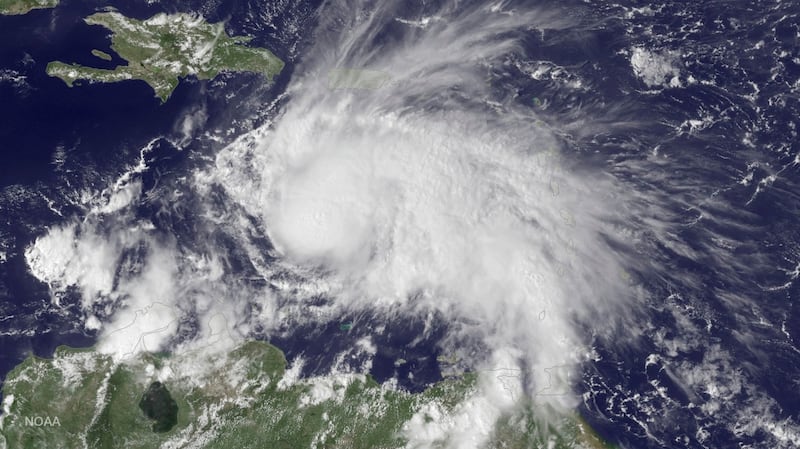Haiti issued a red alert and evacuated families from tiny outlying islands as Hurricane Matthew, the strongest storm to cross the Caribbean in years, shifted its route toward the impoverished country.
Matthew is expected to make landfall in Haiti on Monday as a major storm bringing 240 kilometre per hour winds and extreme rain to the southern coast, simultaneously lashing Jamaica. It will move on to Cuba early on Tuesday, the US national hurricane centre said.
With tropical storm conditions expected to reach Haiti on Sunday night, the prime minister’s office issued the alert warning for landslides, high waves and floods. It evacuated residents by boat from small, exposed sandy islands in the south as a precaution on Saturday.


"We have already started evacuations," Haitian Interior Ministry spokesman Albert Moulion said. "The national centre of emergency operations has been activated." On Sunday, boats were prohibited from going to sea.
The slow-moving storm is forecast to dump as much as 100 cm (40in) of rain in Haiti and up to 64 cm (25in) in Jamaica, the Miami-based hurricane centre said.
Matthew was about 545 km southeast of Port-Au-Prince on Sunday morning and the US National Hurricane Center ranked it at Category 4 of the five-step Saffir-Simpson scale of hurricane intensity. Earlier it had been ranked at the top Category 5.
Twice as strong
Cuban President Raul Castro warned that Hurricane Matthew was twice as powerful as Hurricane Sandy, which devastated Cuba's colonial second city, Santiago de Cuba, in 2012, while the United States prepared to airlift navy families from nearby Guantanamo.
“We have to prepare as it has twice the power of Sandy,” Mr Castro was reported as saying in the Granma newspaper on a visit to Santiago de Cuba.
“We have to prepare, there is no other choice.”
A few miles east, the United States prepared to airlift some 700 spouses and children to Florida from its Guantanamo Bay naval base to wait out the most powerful cyclone to form over the Atlantic since Hurricane Felix in 2007.
The storm is expected to reach Santiago de Cuba and the Cuban province of Guantanamo, where the US operates a naval base and a military prison, by Tuesday.
“The remaining military and civilian personnel will shelter in place and be able to support recovery efforts once safe to do so following the storm’s passage,” the Navy said in a statement.
Cuba began evacuating residents along its southern coast in the east of the country and plans to gradually move tourists to safer ground in the next 24 to 36 hours, state-run media said.
About half a dozen hotels frequented by tourists from Europe and Canada are in the path of the storm in Cuba.
Later in the week, Matthew could affect the Bahamas and the east coast of the United States, although forecasts so far out are often inaccurate. Florida Governor Rick Scott said residents of the state should prepare for the storm.
The ferocity of the storm has led to concerns of economic devastation in the poor countries in its path.
"The hurricane will cause an interruption, obviously, in our economic activities here," Jamaican prime minister Andrew Holness said in an interview on Saturday, adding that tourism and agriculture could be most affected.
“We have allocated all the resources we can given our fiscal restraints and I think that the country is prepared for the hurricane,” Mr Holness said.
The hurricane could affect tourist destinations such as Montego Bay. In Kingston, residents stocked up on canned foods, water and batteries ahead of the storm, while banks and offices boarded up their windows. Fishermen were told not to go to sea.
In MegaMart, a supermarket, Sabrina Neil, a 41-year-old radio announcer, stood with a crowd buying flashlights. “We’re not prepared economically and in the infrastructure. If the hurricane is a Category 5, there is going to be a lot of devastation - that’s the worst case scenario.”
Reuters












